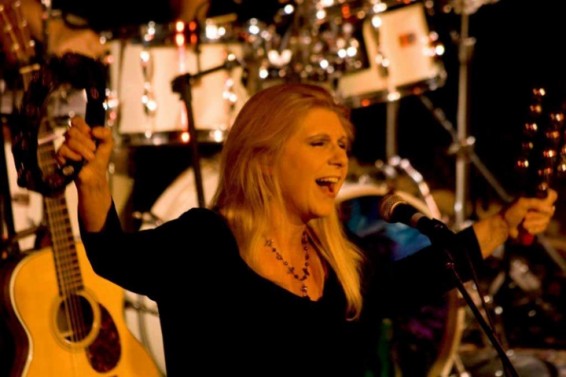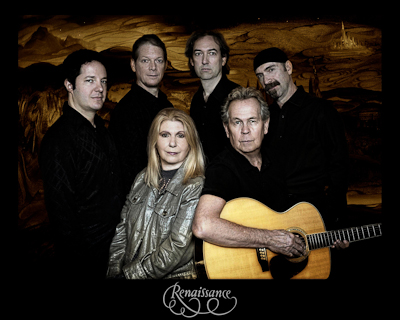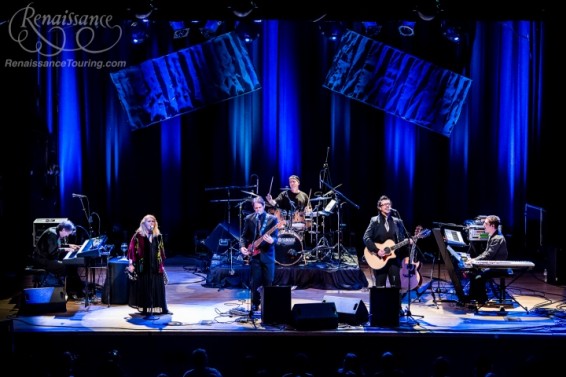“Listen to a full album in its entirety, with lyrics in hand. Somebody spent hours making it and it deserves to be heard.”

This was the first thing I wrote down before I started writing my review notes on Renaissance’s latest release, “Symphony of Light” (review can be read here). Thinking back to when I wrote it, I had just finished listening to the album once through and realized that, in this world of one hit wonders, iPods and 99 cent downloads, I could not remember a time in 2014 that I listened to an album in its entirety. Though this was a practice that I honed on the regular growing up, I feel like it has been easier and easier to forget as music becomes more available and disposable these days. Alas, for the ones who can find the time to sit and marinade with new music or artwork, I am sure they will have an experience that many others are missing out on. An album is a story, a photograph, of a person or group’s creative output in a specific time of their life, relative to all the drama, love and difficult situations they are experiencing. And the whole thing is set to wonderful music. I had the extreme pleasure of interviewing lead singer Annie Haslam and listening to her story about how this album came to be. It certainly made me spin the record once again but this time with a new perspective and a greater appreciation for this piece of art.
Below is an interview and you can click here to read our track by track review of Renaissance’s “Symphony of Light.”
Sometimes you can tell immediately when somebody has a great energy and passion about them. Within minutes of speaking with Renaissance lead vocalist Annie Haslam, we were discussing Dr. Who, laughing about soft boiled eggs and pondering the life of Leonardo Da Vinci; I knew this was going to be a good one.
TB: I noticed you painted the gorgeous album cover for “Symphony of Light.” Can you please tell me more about your interest in painting?
AH: I’ve done many, many paintings. I started in 2002 and have not stopped since. My style is surreal, I have no idea where it comes from. I just tune in to something, somewhere. For example, I can tune into a song; I’ve painted 4 songs so far. I then started painting guitars and eventually The Hard Rock café contacted me for some memorabilia. I had my Carnegie Hall dress and then I thought ‘maybe I should show them a picture I painted of a guitar.’ And then they wanted four of them! I painted for Martin Guitars, The Humane Society and musicians like Mark Wood from the Tran Siberian Orchestra. I also do these little mini paintings, four by six inches, and I take those to my shows and people are collecting them now. I love it.
TB: This is a monumental album. You’ve been through a lot in the last year with the passing of guitarist, best friend and Music Director Michael Dunford, a re-release of the album and a couple tour date cancellations. Can you please describe a little bit about the lead up to the release?
AH: Grandine Il Vento was the name of the original album and is a song on “Symphony of Light.” We did that through the Kickstarter campaign which was fantastic. It was a bittersweet year. It was very odd. We did NEAR Fest, the prog rock festival, then we went into the studio and did the album. We had 15 tour dates lined up and we were really starting to break through again and get some good shows. We were climbing slowly but we were moving forward, you know? I was in the studio doing my vocals, my last vocal on the whole album, when all of a sudden I had this terrible pain in my back and I couldn’t bear it. I found out I had a compression fracture in my vertebrae. So we had to cancel three quarters of that tour, which was heartbreaking, and I had to wear a metal brace for nine months, 24 hours a day. But the doctor said I could probably do the last 5 shows because they were local, so I did and I sang like a bird. Sometimes you perform better under stress it seems.
But what happened after that was even worse than anything else I had ever experienced. Mickey (Michael Dunford) went home and then a couple months later his wife called me and said he had a cerebral hemorrhage and he’s got hours to live. And he died the next day. It was just devastating, I couldn’t believe it. It was very difficult and it happened so fast. But he would have wanted me to carry on, no doubt. We had a new album that needed to be heard and we needed to sell that so we had some money to give [his wife]. I was very distressed. Basically Mickey and I ran the band together and so now I am doing it myself. We now have a new manager and I’m really happy with him, he has taken the pressure off for a couple things. Rave [Tesar] helps a great deal, he is the new Music Director and has been working with me on my solo music since 1988.
Concerning the re-release, we got this distribution deal with Red River in New York. They wanted the album but said, “it’s already out there as Grandine Il Vento. We’d like to repackage it with a new cover and art. Do you have some bonus tracks?” So we used Immortal Beloved and Tonight from our limited release EP that came out a couple years ago. Then Rave and I wrote a song and dedicated it to Mickey called Renaissance Man. It just poured out. The feelings and memories of Mickey were inside and they came right out.

You collaborated with John Wetton of Asia and King Crimson on the track, “Blood Silver Like Moonlight.” Can you tell me how that came to be?
AH: John and I go back a while now because he used to play bass in Renaissance; but this song is about me and John singing in the Angel’s Choir together. I was in England helping him with a situation years ago and we discussed recording together at some point. When I got back home to New York, a friend of mine said, “you and John were in the Angels Choir together, that’s why your voices are so unique and so beautiful and special. And that’s why you were there helping John through that situation. Because you’re together in another energy field or spiritual place.” It all made sense when she said that. So when Mickey gave this music to Rave, Rave changed it around and made it into this gosh beautiful piece and also did all the arrangements and everything for it. And when I heard it, I started creating the words – and then all of a sudden I did them not really knowing I was writing them for me and John; it just poured out. It’s obvious that it wasn’t just for me. It was for me and John, the Angel’s Choir singers, and he was the obvious one because that’s what it was about. And if an angel has blood it should be silver, shouldn’t it? If an angel was a physical thing, a physical body, then the blood would be flowing silver. So it was perfect.
TB: Ian Anderson of Jethro Tull has some flute features on “Cry to the World.” How did this happen?
AH: I was invited down to do Ian’s “Rubbing Elbows” show, which was the name of one of his tours. He was featuring different musical guests and celebrities that would come on stage and perform with him. Afterwards, when we were writing the album, I contacted him and he said, “I’m on tour in Eastern Europe but if you want to send me a WAV file of the song I will do something on my day off in my hotel room and see how it comes out. And if it’s good enough, you can you use it.” And he sent it back and it was perfect. Rave and I were giggling with excitement when we heard it. We both went, “Oh my God!” We were just so excited.
TB: The Mystic and The Muse is a song that gets standing ovations when performed live. Can you briefly describe how the song was born?
AH: I wanted to do a song that depicted a painting somehow. I said to Mickey, “I have an idea for a title and I’ve got two different paintings that I’ve done; but I think they fit. One is called The Mystic and one is called The Muse. And he said, “What about The Mystic and the Muse?” Originally some of this music was written for his musical that never came to fruition, which was a shame. He had this music that hadn’t been used and we were so thrilled with it”
TB: Who sings the duet with you on Air of Drama?
AH: David Keys, the bass player. He has been with me since my solo band. He is fantastic!
TB: I noticed many member changes in the history of Renaissance. Sometimes this can be a difficult thing to go through but you have endured it many times. Can you give advice to some musicians out there facing this hurdle?
AH: It is very difficult to bring somebody else into the band. Personalities are very important. Somebody who doesn’t have a personality or makes other people feel uncomfortable, ultimately, will not work.
TB: Even if the person is very skilled and talented?
AH: It’s nothing. It’s the energy of people. Yes, they can be talented or whatever but when you’re on the stage, it’s the overall energy you’re putting on as well. If somebody is not happy, that’s going to come through eventually. For us it was very difficult. You can’t replace Michael Dunford. You can’t, there’s no way. You can’t replace anybody. People do say ‘replace’ but I don’t like that word when it’s talking about people. Michael’s energy was very calming. He was in control of every note. He had a quiet strength, didn’t run all over the stage. He was very gentlemanly. It was a really good balance and I miss him as a friend as well. I knew him for 41 years and not just as a musician. We’ve gone through a lot of business things together, put out many releases.
TB: Congratulations on the album re-release and I hope the very best on your upcoming tour!
More news and media on their website http://renaissancetouring.com/ and Facebook page https://www.facebook.com/RenaissanceTouring
Annie Haslam’s artwork can be seen and ordered at www.Anniehaslam.com or on her Facebook page https://www.facebook.com/AnnieHaslamArt

